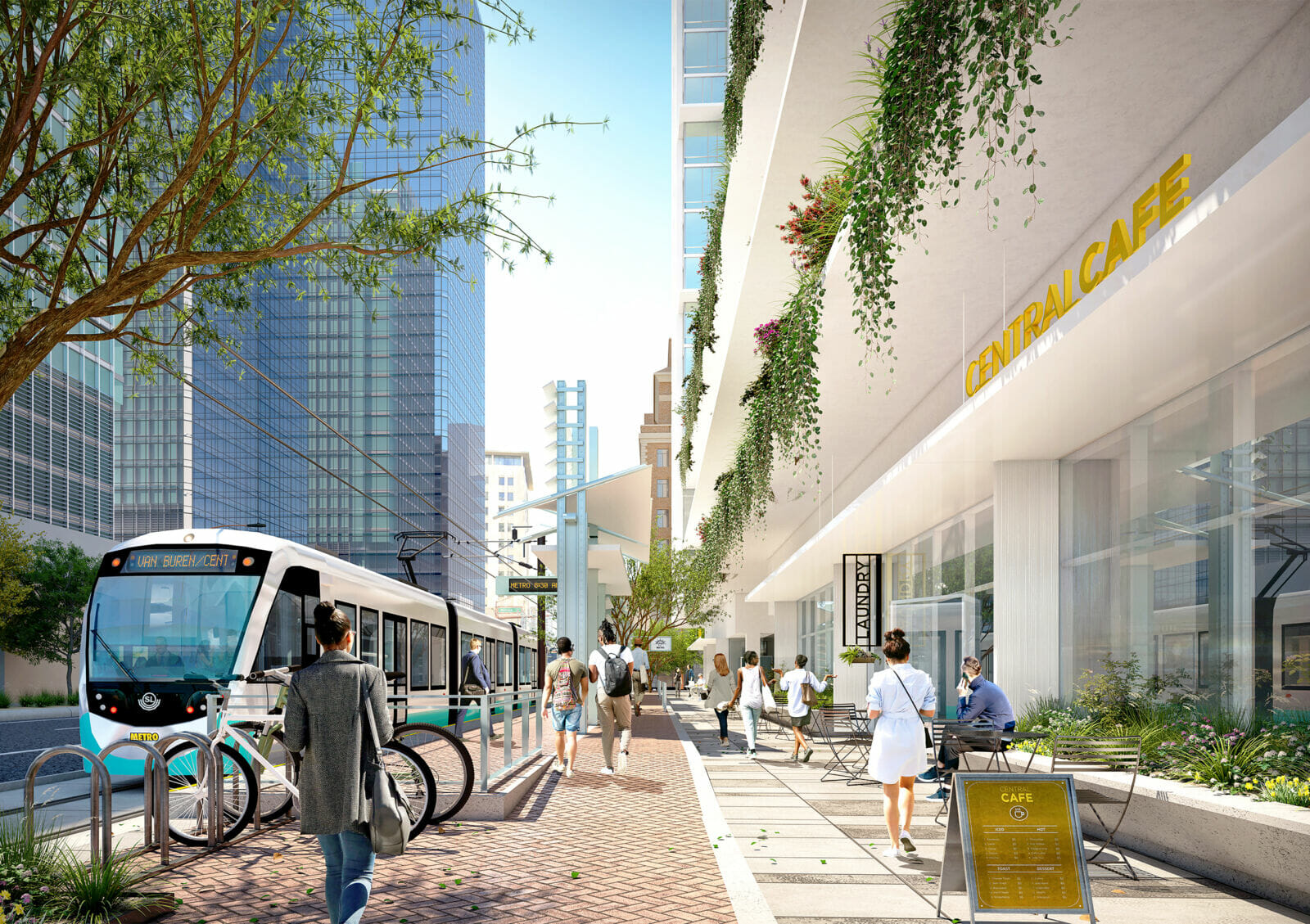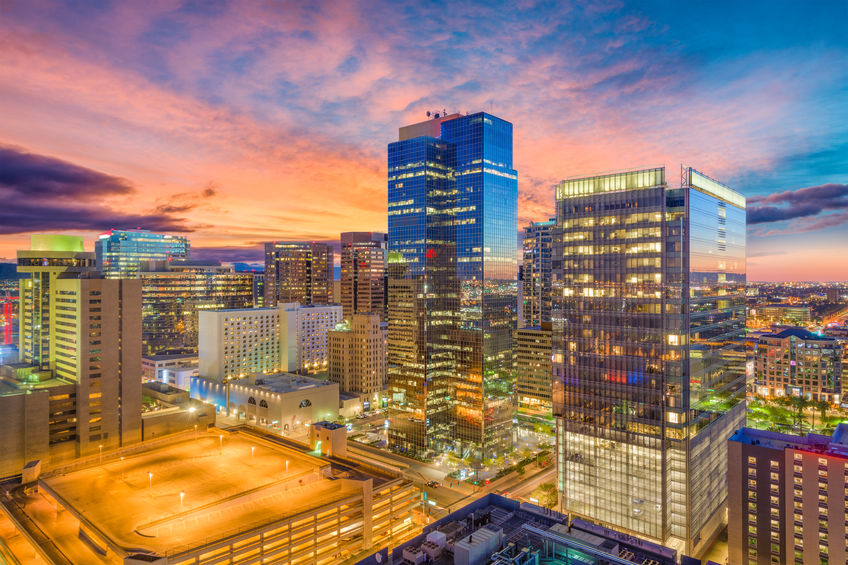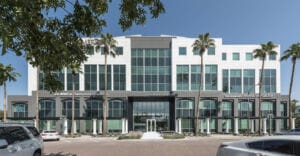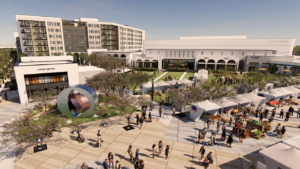In the heart of Phoenix, a wave of redevelopment has swept through downtown marking an evolution in its urban landscape. Spearheading this resurgence are three distinct trends: the burgeoning bioscience core, the adaptive reuse of historical buildings and the flourishing multifamily housing developments. As investors and visionaries converge on this dynamic city center, the merging of these trends not only reshape the scene but also revitalizes the community, offering a glimpse into the future of urban living and economic vitality in Downtown Phoenix.
LEARN MORE: ASU will base its new medical school in Downtown Phoenix
“There was a mass exodus out of downtown in the 1970s. In fact, we didn’t get back to the population that we had in 1970 until 2016. In the 1990s, the City of Phoenix put together a downtown redevelopment strategy to turn downtown back into the destination location that it used to be,” Community and Economic Development Director Christine Mackay says.
A pivotal moment in this Downtown Phoenix redevelopment strategy was the decision to focus on creating an “18-hour economy.” This entailed encouraging residential development to complement the existing commercial and entertainment offerings. Despite initial challenges, including skepticism from developers, the city’s persistence paid off.
Today, Downtown Phoenix boasts a thriving and growing residential community, with a significant portion comprising not only young professionals but also individuals aged 50 and above seeking an urban lifestyle.
“We had a goal in 2014 of getting 10,000 people to live in Downtown Phoenix by 2030. If you fast forward to today, we have 23,500 that live in Downtown Phoenix and we will be at 30,000 by 2030,” Mackay says.

To accommodate this influx in downtown’s transit and housing needs, developments such as Central Station were implemented. Adjacent to Civic Space Park and Arizona State University’s Downtown Phoenix campus, this 1-million-square-foot development acts as a hybrid mixed-use residential project while continuing to operate as a transit center for the light rail.
“It was critical that the project be this open, multi-sided development that connected to the whole city. So many times when you see these kinds of big mixed-use projects, unfortunately, they tend to be fortified with only a couple places where pedestrians can enter the project. And for us, it was all about opening it up and making sure that people can move through it both from a functional standpoint, but also making sure that it has this reading for the whole city,” Steve Valev, associate principal at Multistudio says.
Valev emphasizes the project’s architectural expression, stating, “There has to be a greater diversity, both from an economic standpoint but also in terms of scales and housing types. I think the reason why people like downtown and why it’s been successful was because of the kind of quirky artist character that it has, and I think there has to be a greater effort made to make sure that diversity and quirkiness is not washed away because of how homogenous the housing is.”
Renewed Life
The adaptive reuse of historic buildings has also been integral to Downtown Phoenix redevelopment and its resurgence. The Neighborhood Services Department brought in an abatement program where a specialized group of Neighborhood Preservation Inspectors address blighted properties in cases where structures are found vacant and accessible. This group also addresses properties and vacant lots where the ownership is absent or unresponsive.
“What that has allowed to happen is for us to to work diligently on the adaptive reuse and the preservation of these historic buildings. And that is so unbelievably important because that’s part of what lends to the fabric as to why people want to live in Downtown Phoenix. They want to be part of these really cool old buildings that get brought back into a new life,” Mackay says.
The preservation of these buildings not only honors the city’s rich history but also adds character and charm to the urban landscape. Mackay also attributes downtown’s success in adaptive reuse to the Historic Preservation Office. She cites many examples such as The Van Buren, a former Phoenix Motor Co. building, revitalized into a concert venue and bar. Additionally, an ambitious project to redevelop the historic Monroe Abbey, which caught fire 40 years ago, has been restored into an outdoor entertainment venue by former Mayor Terry Goddard and is set to open the second week of May.
Bioscience Boom
Bioscience has emerged as a driving force behind Downtown Phoenix’s economic growth. The city’s endeavor to secure all four sports teams in the late ‘90s led to the acquisition of 30 acres of land initially intended for a football stadium. After the Cardinals relocated to Glendale, a collaboration involving the county, state and city brainstormed the land’s future use, resulting in the creation of the Phoenix Bioscience Core.
“We went after Dr. Jeffrey Trent, who at the time had just decoded the genome at the National Institute of Health,” Mackay continues. “The governor, the mayor, the county and the university convinced Dr. Trent to open TGen here in Downtown Phoenix, and the City of Phoenix built a $58 million building for TGen to be housed. That was really the birth of the Phoenix Bioscience Core.”
Following right behind TGen was the University of Arizona’s College of Medicine – Phoenix, which kicked off the density of biosciences in downtown. In 2023, the National Institute of Health announced it signed a lease to locate its signature research program on the Phoenix Bioscience Core. This basic, translational and clinical research center will occupy the entire 7th floor of 850 PBC, comprising approximately 35,000 square feet.
The 30-acre Phoenix Bioscience Core has fostered a thriving ecosystem of innovation and discovery. A high concentration of research scientists, anchor institutions such as Arizona’s three public research universities, its proximity to world-class hospitals and now the introduction of NIH’s epidemiology and clinical research branch has solidified Downtown Phoenix as a premier destination for bioscience research and investment.




